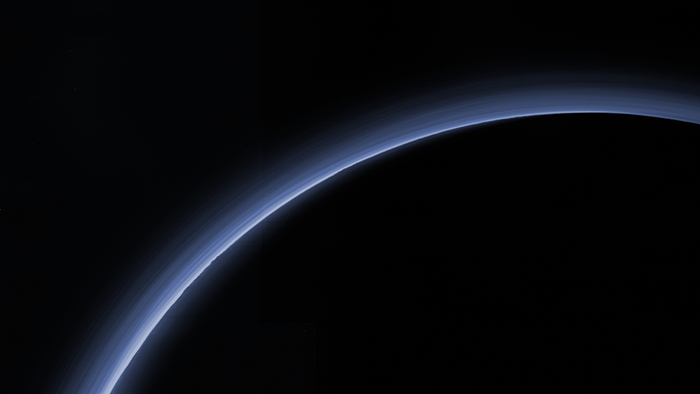
Folks who study nearby rocky worlds and other small bodies in our solar system are kind of lucky; we have a regular rain of space rocks falling to our planet’s surface, and some of these rocks are actually pieces of other worlds that were ejected and sent our way during asteroid impacts.
For folks who study other objects just have to make do with what we can do with massive telescopes and the random space probe. Pluto in particular is annoying. It appears to be only a few pixels across in even our best telescopes, and thanks to New Horizons, we know it is a gloriously complex world with a thin atmosphere we’d love to study.
And when scientists really, really want to study something, they will find a way.
To study Pluto’s atmosphere, researchers sorted where they needed to put telescopes on the planet Earth to observe Pluto pass in front of a star. This kind of alignment is fairly rare, but in newly published data, researchers reveal that during one such occultation in August 2018, they were able to see a star pass behind Pluto’s atmosphere prior to going behind the planet, and that atmosphere is thinner now than it was back in 2015 when New Horizons flew past Pluto.
This thinner atmosphere is consistent with theory; Pluto changes its distance from the Sun during its 248-year orbit and moves from closer to the Earth than Neptune to much further away. When closer, it is warmed and grows a thin atmosphere, and as it moves away, its atmosphere freezes out and falls to the Plutonian surface.
The thickest and thinnest times for the atmosphere don’t align with its closest and furthest points in orbit but actually lag. As described by co-author Leslie Young: “An analogy to this is the way the Sun heats up sand on a beach. Sunlight is most intense at high noon, but the sand then continues soaking up the heat over the course of the afternoon, so it is hottest in late afternoon. The continued persistence of Pluto’s atmosphere suggests that nitrogen ice reservoirs on Pluto’s surface were kept warm by stored heat under the surface. The new data suggests they are starting to cool.
Along with seeing the star’s light pass through the atmosphere and disappear behind the planet, some observers also saw a bright flash when Pluto was directly in front of the star. These folks were positioned so the star was nearly centered behind Pluto, and the flash came from light being bent through Pluto’s atmosphere toward our world. This flash provides highly accurate measures of Pluto’s position in the sky and allows for detailed monitoring of its orbit.
This work was presented by Eliot Young during this week’s DPS conference. Young explains: Scientists have used occultations to monitor changes in Pluto’s atmosphere since 1988.
Observing occultations is almost a sport for some observers. The entire event lasts only two minutes, and only people in just the right places will see the needed alignment. Planetary scientists are known to travel, large telescopes in hand, across continents to see these events. When clouds happen, that’s it. There is no do-over. For the rare Pluto occultations, multiple years of coordination will occur to distribute telescopes and observers through the entire line of occultation in hopes that at least a few will have a clear view of the flickering light.
More Information
SwRI press release




 Join the Crew!
Join the Crew!
 Escape Velocity Space News
Escape Velocity Space News
0 Comments